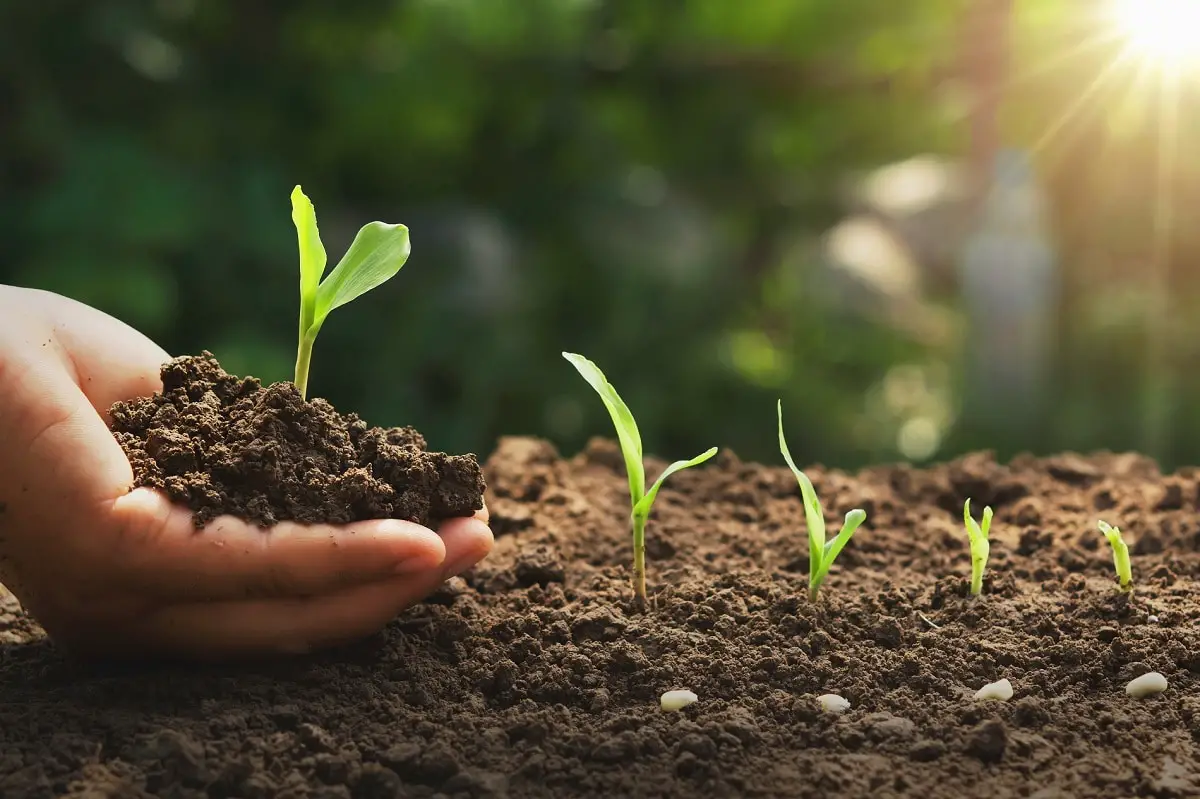
On another planet there are different types of soils that have different characteristics. There are looser and nutrient-poor soils and, on the other hand, more compact and nutrient-rich soils. The composition of each soil determines its characteristics and fertility. In this case, we are going to talk about silty soils.
In this article we are going to tell you what silty soils are, what their characteristics are and why they are considered fertile soils.
What are silt soils

Silty soils are soils that consist to a greater extent of silt than it is a sediment that does not exceed 0.05 mm in size. Due to its small size and light weight, it is transported by air currents and rivers, which is why it is deposited in different areas, especially near riverbeds.
Depending on the texture, silt soils correspond to one of three soil classifications, the other two being sand and clay. Sandy soils are characterized by a thicker, rougher, and less cohesive texture. Clay, on the other hand, is soapy when wet and highly resistant to water.
Silty soils are also composed of gravel, clay, and sand; it may be this specificity that makes them so productive and easy to work with. However, for a silty soil to be considered silty, it must contain at least 80% silt.
Silty soil properties

Slimes are brittle and soft, which allows them to travel with wind and water. During this journey, the particles become smaller and smaller due to the influence of different road surfaces and other chemical processes that take place during this journey.
Silt is capable of completely changing the appearance of a landscape because after its journey it can be deposited in spaces such as lagoons or wetlands. As the size of this reservoir increases, the water will eventually move to another body of water. In fact, many deltas are caused by the movement and deposition of silt.
Silty soil particles are characterized as small particles: slightly larger than clay particles, but slightly smaller than fine sand particles.
Silt is characterized because, considering all its dimensions, all its particles are more or less the same size, this distinguishes it from clay, whose particles are more irregular among themselves. The particles that make up silt soil are lightweight, so the particles are easily carried by wind and water.
They are usually a very dark brown in color and feel a bit like clay. because they mold easily and are sticky when wet. However, silty soils crumble when dry and are not as hard and dense as clayey soils. Silty soil is soft and unstable when wet, but crumbles when it dries, giving it a dusty texture.
Why are they fertile?

This soil is characterized by being very fertile, this is due to the high decomposition rate of the organic matter it houses. As a result, a large amount of nutrients is produced, and due to the properties of silty soils, these nutrients remain in such soil for a longer time.
The fertile soil is very easy to work and cultivate. They are soft soils that drain and do not have a plastic appearance when wet.
Especially silty soils can be found on the banks of rivers, because it is through these soils that they move from one place to another. This type of soil is often found around riverbeds or in places that have previously been flooded.
The Nile delta in Egypt is a very clear example of silty soil, with all the characteristics that compose it.
Crops
Silty soils are characterized by allowing the growth of almost any plant or food, except those organisms that require very dry soil to grow. This is so because silt allows the soil to retain a lot of moisture and also helps with constant ventilation as air circulates freely between the particles.
As mentioned earlier, silt-rich soils are often found along the banks of rivers. Therefore, these spaces are very fertile and suitable for growing different foods.
The aforementioned Nile Delta is considered one of the most fertile areas, with crops flourishing for at least a millennium.
When the same land is overcultivated, the fertility of the silty soil suffers as this hinders the water filtration process during the rainy season. Also, if this overgrown soil is not moistened enough, it can become very stiff and difficult to work. Clay soil will provide significant fertility potential as long as it is kept moist and over-tillage is avoided. For example, lettuce, rice, cabbage, and artichokes can be grown in fertile soil. Trees like willows and poplars grow.
Silty soils for construction
Just as silty soil is considered an ideal soil for agriculture due to its high fertility, it is also important to note that it may not be an ideal soil for building houses and other structures.
Silty soil is characterized by being wet and cold because it retains moisture for a long time. This is done with unstable and slow-draining soils. As a result, silty soils swell due to water retention, that constantly collides with the structure and weakens it over time.
In fact, recent research has determined that silt has the potential to play a significant role in soil liquefaction (the weakening of the Earth’s surface after earthquakes). Liquefaction can be fatal because the soil at the base of the structure weakens and it can collapse.
As you can see, this type of soil is one of the best for crops and sometimes for construction. I hope that with this information you can learn more about silty soils and their characteristics.

